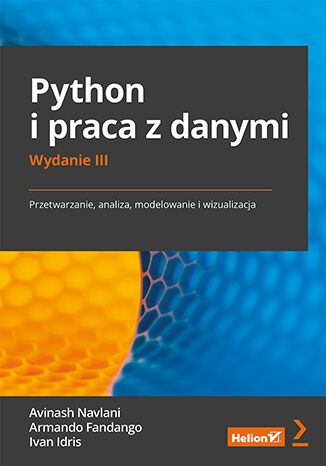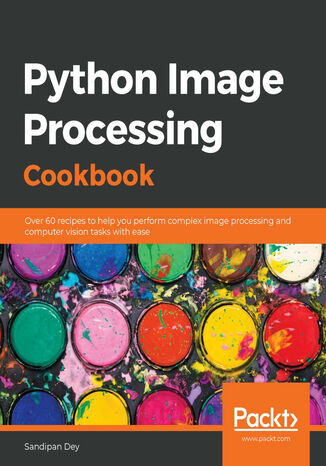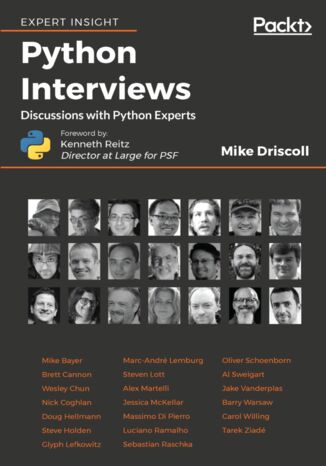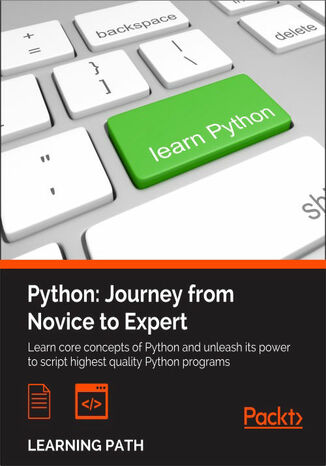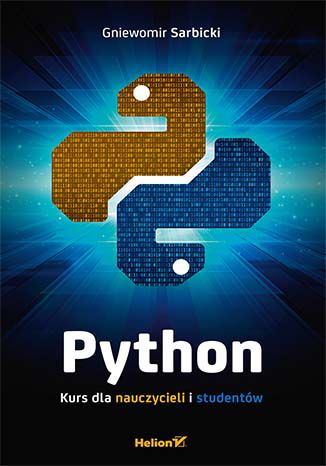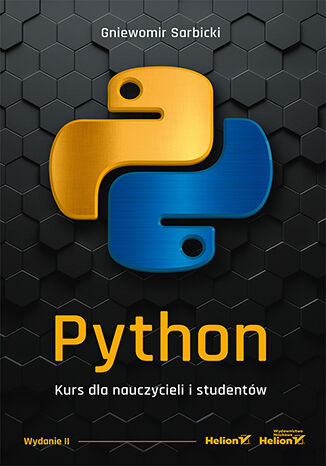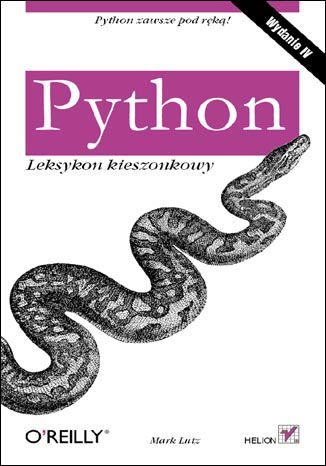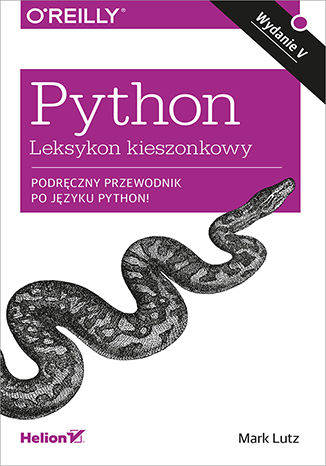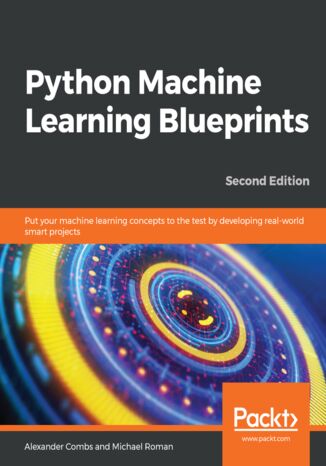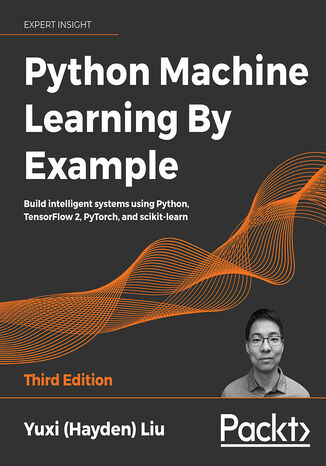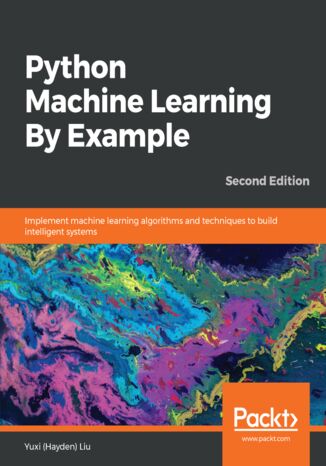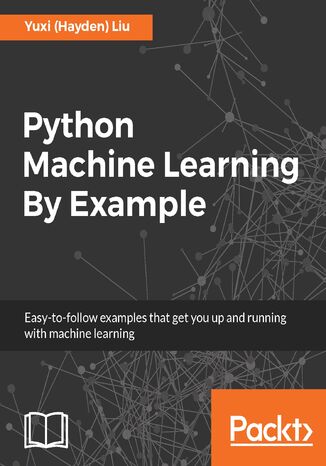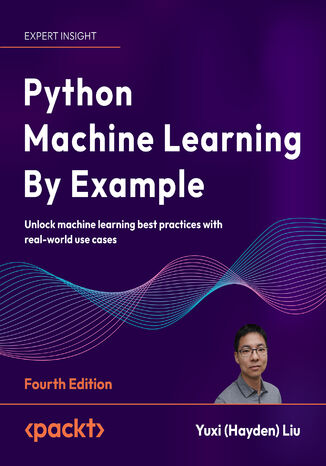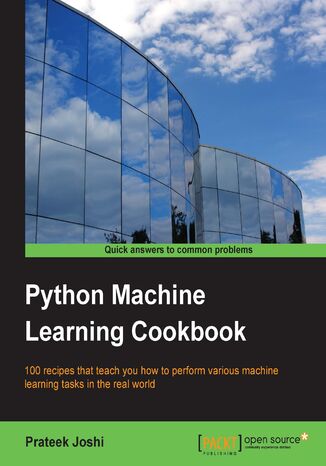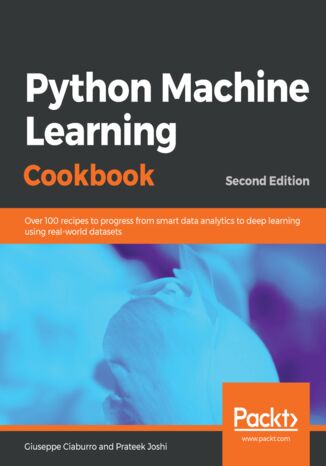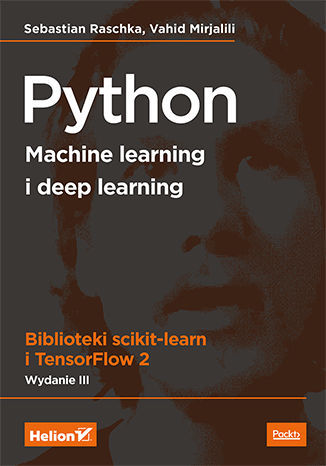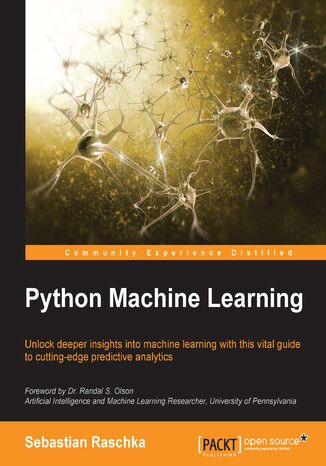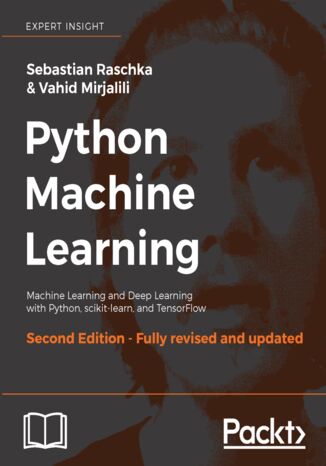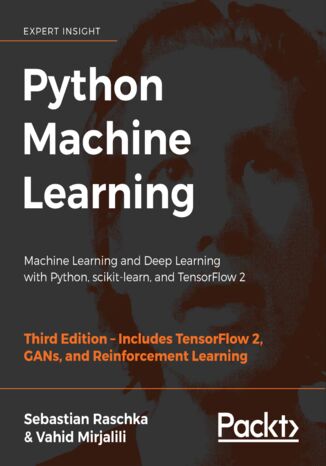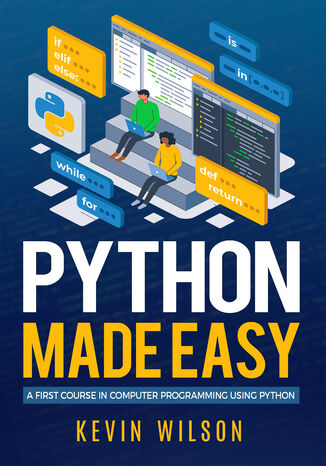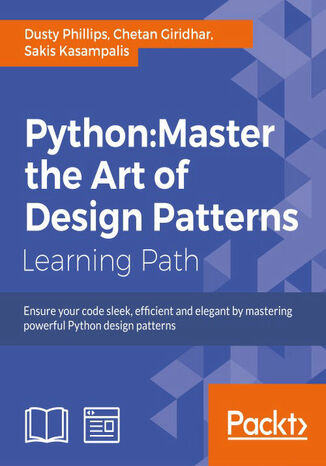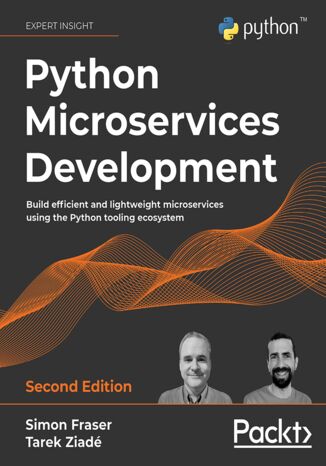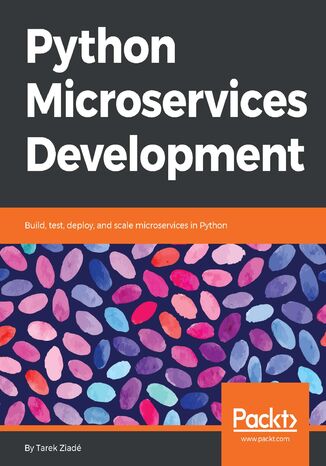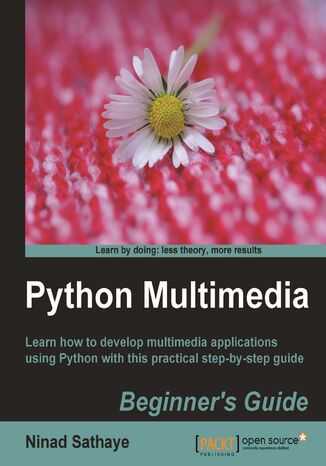Категорії
Електронні книги
-
Бізнес та економіка
- Біткойн
- Ділова жінка
- Коучинг
- Контроль
- Електронний бізнес
- Економіка
- Фінанси
- Фондова біржа та інвестиції
- Особисті компетенції
- Комп'ютер в офісі
- Комунікація та переговори
- Малий бізнес
- Маркетинг
- Мотивація
- Мультимедійне навчання
- Нерухомість
- Переконання та НЛП
- Податки
- Соціальна політика
- Порадники
- Презентації
- Лідерство
- Зв'язки з громадськістю
- Звіти, аналізи
- Секрет
- Соціальні засоби комунікації
- Продаж
- Стартап
- Ваша кар'єра
- Управління
- Управління проектами
- Людські ресурси (HR)
-
Для дітей
-
Для молоді
-
Освіта
-
Енциклопедії, словники
-
Електронна преса
- Architektura i wnętrza
- Безпека життєдіяльності
- Biznes i Ekonomia
- Будинок та сад
- Електронний бізнес
- Ekonomia i finanse
- Езотерика
- Фінанси
- Особисті фінанси
- Бізнес
- Фотографія
- Інформатика
- Відділ кадрів та оплата праці
- Для жінок
- Комп'ютери, Excel
- Бухгалтерія
- Культура та література
- Наукові та академічні
- Охорона навколишнього середовища
- Впливові
- Освіта
- Податки
- Подорожі
- Психологія
- Релігія
- Сільське господарство
- Ринок книг і преси
- Транспорт та спедиція
- Здоров'я та краса
-
Історія
-
Інформатика
- Офісні застосунки
- Бази даних
- Біоінформатика
- Бізнес ІТ
- CAD/CAM
- Digital Lifestyle
- DTP
- Електроніка
- Цифрова фотографія
- Комп'ютерна графіка
- Ігри
- Хакування
- Hardware
- IT w ekonomii
- Наукові пакети
- Шкільні підручники
- Основи комп'ютера
- Програмування
- Мобільне програмування
- Інтернет-сервери
- Комп'ютерні мережі
- Стартап
- Операційні системи
- Штучний інтелект
- Технологія для дітей
- Вебмайстерність
-
Інше
-
Іноземні мови
-
Культура та мистецтво
-
Шкільні читанки
-
Література
- Антології
- Балада
- Біографії та автобіографії
- Для дорослих
- Драми
- Журнали, щоденники, листи
- Епос, епопея
- Нарис
- Наукова фантастика та фантастика
- Фельєтони
- Художня література
- Гумор, сатира
- Інше
- Класичний
- Кримінальний роман
- Нехудожня література
- Художня література
- Mity i legendy
- Лауреати Нобелівської премії
- Новели
- Побутовий роман
- Okultyzm i magia
- Оповідання
- Спогади
- Подорожі
- Оповідна поезія
- Поезія
- Політика
- Науково-популярна
- Роман
- Історичний роман
- Проза
- Пригодницька
- Журналістика
- Роман-репортаж
- Romans i literatura obyczajowa
- Сенсація
- Трилер, жах
- Інтерв'ю та спогади
-
Природничі науки
-
Соціальні науки
-
Шкільні підручники
-
Науково-популярна та академічна
- Археологія
- Bibliotekoznawstwo
- Кінознавство / Теорія кіно
- Філологія
- Польська філологія
- Філософія
- Finanse i bankowość
- Географія
- Економіка
- Торгівля. Світова економіка
- Історія та археологія
- Історія мистецтва і архітектури
- Культурологія
- Мовознавство
- літературні студії
- Логістика
- Математика
- Ліки
- Гуманітарні науки
- Педагогіка
- Навчальні засоби
- Науково-популярна
- Інше
- Психологія
- Соціологія
- Театральні студії
- Богослов’я
- Економічні теорії та науки
- Transport i spedycja
- Фізичне виховання
- Zarządzanie i marketing
-
Порадники
-
Ігрові посібники
-
Професійні та спеціальні порадники
-
Юридична
- Безпека життєдіяльності
- Історія
- Дорожній кодекс. Водійські права
- Юридичні науки
- Охорона здоров'я
- Загальне, компендіум
- Академічні підручники
- Інше
- Закон про будівництво і житло
- Цивільне право
- Фінансове право
- Господарське право
- Господарське та комерційне право
- Кримінальний закон
- Кримінальне право. Кримінальні злочини. Кримінологія
- Міжнародне право
- Міжнародне та іноземне право
- Закон про охорону здоров'я
- Закон про освіту
- Податкове право
- Трудове право та законодавство про соціальне забезпечення
- Громадське, конституційне та адміністративне право
- Кодекс про шлюб і сім'ю
- Аграрне право
- Соціальне право, трудове право
- Законодавство Євросоюзу
- Промисловість
- Сільське господарство та захист навколишнього середовища
- Словники та енциклопедії
- Державні закупівлі
- Управління
-
Путівники та подорожі
- Африка
- Альбоми
- Південна Америка
- Центральна та Північна Америка
- Австралія, Нова Зеландія, Океанія
- Австрія
- Азії
- Балкани
- Близький Схід
- Болгарія
- Китай
- Хорватія
- Чеська Республіка
- Данія
- Єгипет
- Естонія
- Європа
- Франція
- Гори
- Греція
- Іспанія
- Нідерланди
- Ісландія
- Литва
- Латвія
- Mapy, Plany miast, Atlasy
- Мініпутівники
- Німеччина
- Норвегія
- Активні подорожі
- Польща
- Португалія
- Інше
- Przewodniki po hotelach i restauracjach
- Росія
- Румунія
- Словаччина
- Словенія
- Швейцарія
- Швеція
- Світ
- Туреччина
- Україна
- Угорщина
- Велика Британія
- Італія
-
Психологія
- Філософія життя
- Kompetencje psychospołeczne
- Міжособистісне спілкування
- Mindfulness
- Загальне
- Переконання та НЛП
- Академічна психологія
- Психологія душі та розуму
- Психологія праці
- Relacje i związki
- Батьківство та дитяча психологія
- Вирішення проблем
- Інтелектуальний розвиток
- Секрет
- Сексуальність
- Спокушання
- Зовнішній вигляд та імідж
- Філософія життя
-
Релігія
-
Спорт, фітнес, дієти
-
Техніка і механіка
Аудіокниги
-
Бізнес та економіка
- Біткойн
- Ділова жінка
- Коучинг
- Контроль
- Електронний бізнес
- Економіка
- Фінанси
- Фондова біржа та інвестиції
- Особисті компетенції
- Комунікація та переговори
- Малий бізнес
- Маркетинг
- Мотивація
- Нерухомість
- Переконання та НЛП
- Податки
- Соціальна політика
- Порадники
- Презентації
- Лідерство
- Зв'язки з громадськістю
- Секрет
- Соціальні засоби комунікації
- Продаж
- Стартап
- Ваша кар'єра
- Управління
- Управління проектами
- Людські ресурси (HR)
-
Для дітей
-
Для молоді
-
Освіта
-
Енциклопедії, словники
-
Електронна преса
-
Історія
-
Інформатика
-
Інше
-
Іноземні мови
-
Культура та мистецтво
-
Шкільні читанки
-
Література
- Антології
- Балада
- Біографії та автобіографії
- Для дорослих
- Драми
- Журнали, щоденники, листи
- Епос, епопея
- Нарис
- Наукова фантастика та фантастика
- Фельєтони
- Художня література
- Гумор, сатира
- Інше
- Класичний
- Кримінальний роман
- Нехудожня література
- Художня література
- Mity i legendy
- Лауреати Нобелівської премії
- Новели
- Побутовий роман
- Okultyzm i magia
- Оповідання
- Спогади
- Подорожі
- Поезія
- Політика
- Науково-популярна
- Роман
- Історичний роман
- Проза
- Пригодницька
- Журналістика
- Роман-репортаж
- Romans i literatura obyczajowa
- Сенсація
- Трилер, жах
- Інтерв'ю та спогади
-
Природничі науки
-
Соціальні науки
-
Науково-популярна та академічна
-
Порадники
-
Професійні та спеціальні порадники
-
Юридична
-
Путівники та подорожі
-
Психологія
- Філософія життя
- Міжособистісне спілкування
- Mindfulness
- Загальне
- Переконання та НЛП
- Академічна психологія
- Психологія душі та розуму
- Психологія праці
- Relacje i związki
- Батьківство та дитяча психологія
- Вирішення проблем
- Інтелектуальний розвиток
- Секрет
- Сексуальність
- Спокушання
- Зовнішній вигляд та імідж
- Філософія життя
-
Релігія
-
Спорт, фітнес, дієти
-
Техніка і механіка
Відеокурси
-
Бази даних
-
Big Data
-
Biznes, ekonomia i marketing
-
Кібербезпека
-
Data Science
-
DevOps
-
Для дітей
-
Електроніка
-
Графіка / Відео / CAX
-
Ігри
-
Microsoft Office
-
Інструменти розробки
-
Програмування
-
Особистісний розвиток
-
Комп'ютерні мережі
-
Операційні системи
-
Тестування програмного забезпечення
-
Мобільні пристрої
-
UX/UI
-
Веброзробка, Web development
-
Управління
Подкасти
Python i praca z danymi. Przetwarzanie, analiza, modelowanie i wizualizacja. Wydanie III
Avinash Navlani, Armando Fandango, Ivan Idris
Analiza danych sprawia, że dzięki ich dużym i mniejszym kolekcjom uzyskujemy wartościową wiedzę, która pozwala na podejmowanie najlepszych decyzji. Dzieje się to poprzez odkrywanie wzorców lub trendów. Obecnie Python udostępnia przeznaczone specjalnie do tego celu narzędzia i biblioteki. Możemy więc łatwo korzystać z wyrafinowanych technik wydobywania wiedzy z danych. Aby jednak osiągnąć zamierzone efekty, trzeba dobrze poznać zarówno metodologię analizy danych, jak i zasady pracy ze służącymi do tego narzędziami. Dzięki tej książce zdobędziesz wszystkie potrzebne informacje i umiejętności, aby skutecznie używać Pythona do analizy danych. Omówiono tu niezbędne podstawy statystyki i zasady analizy danych. Wyczerpująco przedstawiono zaawansowane zagadnienia dotyczące przygotowania, przetwarzania i modelowania danych, a także ich wizualizacji. W zrozumiały sposób wyjaśniono takie procesy jak inteligentne przetwarzanie i analizowanie danych za pomocą algorytmów uczenia maszynowego: regresji, klasyfikacji, analizy głównych składowych czy analizy skupień. Nie zabrakło praktycznych przykładów przetwarzania języka naturalnego i analizy obrazów. Ciekawym zagadnieniem jest również wykonywanie obliczeń równoległych za pomocą biblioteki Dask. W książce między innymi: podstawy analizy danych i korzystanie z bibliotek NumPy i pandas praca z danymi w różnych formatach interaktywna wizualizacja z bibliotekami Matplotlib, seaborn i Bokeh inżynieria cech, analiza szeregów czasowych i przetwarzanie sygnałów zaawansowana analiza danych tekstowych i obrazów Python: wydobywaj z danych wiedzę o wielkiej wartości!
With the advancements in wireless devices and mobile technology, there's increasing demand for people with digital image processing skills in order to extract useful information from the ever-growing volume of images. This book provides comprehensive coverage of the relevant tools and algorithms, and guides you through analysis and visualization for image processing.With the help of over 60 cutting-edge recipes, you'll address common challenges in image processing and learn how to perform complex tasks such as object detection, image segmentation, and image reconstruction using large hybrid datasets. Dedicated sections will also take you through implementing various image enhancement and image restoration techniques, such as cartooning, gradient blending, and sparse dictionary learning. As you advance, you'll get to grips with face morphing and image segmentation techniques. With an emphasis on practical solutions, this book will help you apply deep learning techniques such as transfer learning and fine-tuning to solve real-world problems.By the end of this book, you'll be proficient in utilizing the capabilities of the Python ecosystem to implement various image processing techniques effectively.
Python Interviews. Discussions with Python Experts
Michael Driscoll, Kenneth Reitz
Each of these twenty Python Interviews can inspire and refresh your relationship with Python and the people who make Python what it is today. Let these interviews spark your own creativity, and discover how you also have the ability to make your mark on a thriving tech community. This book invites you to immerse in the Python landscape, and let these remarkable programmers show you how you too can connect and share with Python programmers around the world. Learn from their opinions, enjoy their stories, and use their tech tips.• Brett Cannon - former director of the PSF, Python core developer, led the migration to Python 3.• Steve Holden - tireless Python promoter and former chairman and director of the PSF.• Carol Willing - former director of the PSF and Python core developer, Project Jupyter Steering Council member.• Nick Coghlan - founding member of the PSF's Packaging Working Group and Python core developer.• Jessica McKellar - former director of the PSF and Python activist.• Marc-André Lemburg - Python core developer and founding member of the PSF.• Glyph Lefkowitz - founder of Twisted and fellow of the PSF• Doug Hellmann - fellow of the PSF, creator of the Python Module of the Week blog, Python community member since 1998.• Massimo Di Pierro - fellow of the PSF, data scientist and the inventor of web2py. • Alex Martelli - fellow of the PSF and co-author of Python in a Nutshell.• Barry Warsaw - fellow of the PSF, Python core developer since 1995, and original member of PythonLabs.• Tarek Ziadé - founder of Afpy and author of Expert Python Programming.• Sebastian Raschka - data scientist and author of Python Machine Learning.• Wesley Chun - fellow of the PSF and author of the Core Python Programming books.• Steven Lott - Python blogger and author of Python for Secret Agents.• Oliver Schoenborn - author of Pypubsub and wxPython mailing list contributor.• Al Sweigart - bestselling author of Automate the Boring Stuff with Python and creator of the Python modules Pyperclip and PyAutoGUI.• Luciano Ramalho - fellow of the PSF and the author of Fluent Python.• Mike Bayer - fellow of the PSF, creator of open source libraries including SQLAlchemy.• Jake Vanderplas - data scientist and author of Python Data Science Handbook.
Python: Journey from Novice to Expert. Journey from Novice to Expert
Fabrizio Romano, Dusty Phillips, Rick van Hattem
Python is a dynamic and powerful programming language, having its application in a wide range of domains. It has an easy-to-use, simple syntax, and a powerful library, which includes hundreds of modules to provide routines for a wide range of applications, thus making it a popular language among programing enthusiasts.This course will take you on a journey from basic programming practices to high-end tools and techniques giving you an edge over your peers. It follows an interesting learning path, divided into three modules. As you complete each one, you’ll have gained key skills and get ready for the material in the next module.The first module will begin with exploring all the essentials of Python programming in an easy-to-understand way. This will lay a good foundation for those who are interested in digging deeper. It has a practical and example-oriented approach through which both the introductory and the advanced topics are explained. Starting with the fundamentals of programming and Python, it ends by exploring topics, like GUIs, web apps, and data science.In the second module you will learn about object oriented programming techniques in Python. Starting with a detailed analysis of object-oriented technique and design, you will use the Python programming language to clearly grasp key concepts from the object-oriented paradigm. This module fully explains classes, data encapsulation, inheritance, polymorphism, abstraction, and exceptions with an emphasis on when you can use each principle to develop well-designed software.With a good foundation of Python you will move onto the third module which is a comprehensive tutorial covering advanced features of the Python language. Start by creating a project-specific environment using venv. This will introduce you to various Pythonic syntax and common pitfalls before moving onto functional features and advanced concepts, thereby gaining an expert level knowledge in programming and teaching how to script highest quality Python programs.
Python. Kurs dla nauczycieli i studentów
Weź Pythona na uczelnię! Python to jeden z tych języków programowania, bez których trudno się dziś obejść. Dzięki słynnej elastyczności oraz rozbudowanemu zestawowi narzędzi i bibliotek można wykorzystywać go w najróżniejszych projektach i na najróżniejszych platformach, a łatwość opanowania podstaw zachęca do nauki. Sprawdź sam, jak wygodnie i prosto da się w nim pisać własny kod, opracowywać aplikacje desktopowe, projektować strony www czy przeprowadzać obliczenia numeryczne. Książka Python. Kurs dla nauczycieli i studentów powstał z myślą o wszystkich, którzy chcą opanować podstawy Pythona i praktycznie wykorzystywać go na co dzień. Kurs dzieli się na dwie części: pierwsza zawiera wprowadzenie do języka, pozwalające ruszyć z własnymi projektami; druga zaś wprowadza ważne, bardziej rozbudowane konstrukcje językowe. Niezwykle istotnym atutem tego podręcznika są ćwiczenia wraz z rozwiązaniami, opracowane na podstawie wieloletnich doświadczeń autora. Można tu znaleźć zarówno materiały do samodzielnej nauki, jak i inspiracje do prowadzenia własnych zajęć z uczniami czy studentami. Jeśli chcesz zacząć aktywnie korzystać z niesamowitych możliwości Pythona, ta książka jest dla Ciebie! Podstawowe elementy, operacje i funkcje Programowanie obiektowe i graficzny interfejs użytkownika Wielowątkowość i komunikacja sieciowa Obsługa baz danych i współpraca z serwerem Apache Obliczenia numeryczne i zarządzanie atrybutami w klasach Iteratory, generatory, koprocedury Współbieżność wykorzystująca podprocesy Moc Pythona w Twoich rękach!
Python. Kurs dla nauczycieli i studentów. Wydanie II
Python - prosto, szybko, skutecznie Konstrukcje języka Python Sposoby ich użycia Zadania z rozwiązaniami Python to nowoczesny, potężny i uniwersalny język programowania, który zdobył dużą popularność zarówno wśród zawodowców z branży IT, jak i w szkołach i na uczelniach - jako doskonałe narzędzie do nauki programowania na różnych poziomach. Duże możliwości, prostota i zwartość składni, czytelność kodu, wszechstronność zastosowań i wsparcie wielu paradygmatów sprawiają, że co najmniej podstawowa znajomość Pythona stanowi jedno z najczęstszych wymagań wobec poszukujących pracy programistów i inżynierów, nawet jeśli na co dzień mają oni używać zupełnie innych technologii. Ta książka pomoże nauczycielom, uczniom, studentom i wszystkim zainteresowanym poznaniem Pythona opanować podstawy tego języka i rozpocząć stosowanie go w praktyce. Krok po kroku uczy czytać i pisać kod, przedstawiając zarówno konstrukcje i funkcje języka, jak i możliwości ich praktycznego użycia do rozwiązywania typowych problemów programistycznych. Programowanie interfejsów graficznych, programowanie wielowątkowe, programowanie sieciowe, tworzenie stron WWW, obliczenia numeryczne - w tym wszystkim świetnie sprawdzi się Python. I wszystko to można znaleźć w tej książce! Pisanie i uruchamianie programów w Pythonie Podstawowe typy danych i ich zastosowanie Instrukcje warunkowe, pętle i funkcje Obsługa wyjątków i używanie plików Programowanie obiektowe w Pythonie Graficzny interfejs użytkownika Wielowątkowość, sieci, bazy danych i strony WWW Funkcje wyższych rzędów Iteratory, generatory, koprocedury Programowanie asynchroniczne i współbieżne Programowanie w Pythonie w praktyce
Python. Leksykon kieszonkowy. Wydanie IV
Jakie możliwości kryją standardowe moduły biblioteczne? Jak wykonywać operacje na plikach? Jak stworzyć graficzny interfejs użytkownika? Python to wyjątkowo praktyczny język programowania, idealnie nadający się do szybkiego rozwiązywania niecodziennych problemów, z którymi często borykają się koderzy. Nie wymusza on stosowania jednego stylu programowania, co pozwala na dużo większą elastyczność w trakcie pisania kodu. Umożliwia programowanie obiektowe, strukturalne i funkcyjne, a ponadto udostępnia zaawansowane mechanizmy zarządzania pamięcią, zapewnia dynamiczne sprawdzanie typów oraz czytelną składnię. Te wszystkie zalety powodują, że Python ma grupę swoich wiernych fanów. Niniejsza książka należy do popularnej serii "Leksykon kieszonkowy", dzięki której zawsze i wszędzie możesz przypomnieć sobie wybrane zagadnienia, związane z różną tematyką. Pozycja, którą właśnie trzymasz w rękach, została poświęcona językowi Python. W trakcie jej lektury zapoznasz się z takimi zagadnieniami, jak sterowanie przepływem programu, wykorzystanie pętli, list, słowników oraz operacje na plikach. Ponadto w każdej chwili będziesz mógł sprawdzić składnię oraz sposoby wykorzystania funkcji i wyjątków wbudowanych. Książka stanowi znakomite kompendium wiedzy na temat języka Python. Sprawdzi się ona w rękach początkującego użytkownika - jako przewodnik, a w rękach zaawansowanego programisty - jako pomocnik. Wbudowane typy i operatory Działania na liczbach Operacje na łańcuchach znaków Wykorzystanie Unicode w Pythonie Obsługa list oraz słowników Operacje na zbiorach i plikach Sterowanie przepływem programu Konwersja typów Obsługa wyjątków Wykorzystanie przestrzeni nazw Zasięgi zmiennych Przeciążanie operatorów Standardowe moduły biblioteczne Zastosowanie wyrażeń regularnych Tworzenie graficznego interfejsu użytkownika Wyciśnij jeszcze więcej z języka Python!
Python. Leksykon kieszonkowy. Wydanie V
Język Python obecny jest na rynku od ponad 20 lat. Opracowany został na początku lat dziewięćdziesiątych XX wieku i błyskawicznie zaczął zdobywać uznanie programistów na całym świecie. Python sprawdza się doskonale w pisaniu skryptów oraz narzędzi, a w dużym projekcie także nie zawiedzie oczekiwań. Język ten korzysta z automatycznego zarządzania pamięcią oraz umożliwia obiektowe i funkcyjne podejście do tworzonego programu. Jednym z jego najważniejszych atutów jest bardzo silna społeczność programistów, wymieniająca się na bieżąco informacjami na temat praktycznych zastosowań tego języka. Dzięki temu uzyskanie odpowiedzi na trapiące Cię pytania nie powinno stanowić problemu. Jeżeli jednak chcesz mieć zawsze pod ręką sprawdzone źródło informacji, które pozwoli Ci w każdej sytuacji rozwiać wątpliwości, to trafiłeś na doskonałą pozycję. Należy ona do serii Leksykon kieszonkowy i charakteryzuje się niezwykle zwięzłym, przejrzystym układem najważniejszych treści oraz poręczną formą. Znajdziesz tu szczegółowe informacje na temat typów wbudowanych, wyjątków, programowania obiektowego oraz przetwarzania nazw i reguł zasięgu. Kolejne wydanie tej książki zostało ulepszone i zaktualizowane o mnóstwo nowych informacji, takich jak wykorzystanie Python Launcher w systemie Windows czy formalne reguły dziedziczenia. To doskonałe źródło informacji na temat języka Python! Dzięki tej książce: poznasz podstawy Pythona zapoznasz się z zasadami programowania w tym języku poznasz typy wbudowane wykorzystasz standardowe moduły będziesz mieć zawsze pod ręką solidne źródło informacji o Pythonie Najlepsze rozwiązania typowych problemów!
Alexander Combs, Michael Roman
Machine learning is transforming the way we understand and interact with the world around us. This book is the perfect guide for you to put your knowledge and skills into practice and use the Python ecosystem to cover key domains in machine learning. This second edition covers a range of libraries from the Python ecosystem, including TensorFlow and Keras, to help you implement real-world machine learning projects.The book begins by giving you an overview of machine learning with Python. With the help of complex datasets and optimized techniques, you’ll go on to understand how to apply advanced concepts and popular machine learning algorithms to real-world projects. Next, you’ll cover projects from domains such as predictive analytics to analyze the stock market and recommendation systems for GitHub repositories. In addition to this, you’ll also work on projects from the NLP domain to create a custom news feed using frameworks such as scikit-learn, TensorFlow, and Keras. Following this, you’ll learn how to build an advanced chatbot, and scale things up using PySpark. In the concluding chapters, you can look forward to exciting insights into deep learning and you'll even create an application using computer vision and neural networks.By the end of this book, you’ll be able to analyze data seamlessly and make a powerful impact through your projects.
Python Machine Learning By Example, Third Edition serves as a comprehensive gateway into the world of machine learning (ML).With six new chapters, on topics including movie recommendation engine development with Naïve Bayes, recognizing faces with support vector machine, predicting stock prices with artificial neural networks, categorizing images of clothing with convolutional neural networks, predicting with sequences using recurring neural networks, and leveraging reinforcement learning for making decisions, the book has been considerably updated for the latest enterprise requirements.At the same time, this book provides actionable insights on the key fundamentals of ML with Python programming. Hayden applies his expertise to demonstrate implementations of algorithms in Python, both from scratch and with libraries.Each chapter walks through an industry-adopted application. With the help of realistic examples, you will gain an understanding of the mechanics of ML techniques in areas such as exploratory data analysis, feature engineering, classification, regression, clustering, and NLP.By the end of this ML Python book, you will have gained a broad picture of the ML ecosystem and will be well-versed in the best practices of applying ML techniques to solve problems.
The surge in interest in machine learning (ML) is due to the fact that it revolutionizes automation by learning patterns in data and using them to make predictions and decisions. If you’re interested in ML, this book will serve as your entry point to ML.Python Machine Learning By Example begins with an introduction to important ML concepts and implementations using Python libraries. Each chapter of the book walks you through an industry adopted application. You’ll implement ML techniques in areas such as exploratory data analysis, feature engineering, and natural language processing (NLP) in a clear and easy-to-follow way.With the help of this extended and updated edition, you’ll understand how to tackle data-driven problems and implement your solutions with the powerful yet simple Python language and popular Python packages and tools such as TensorFlow, scikit-learn, gensim, and Keras. To aid your understanding of popular ML algorithms, the book covers interesting and easy-to-follow examples such as news topic modeling and classification, spam email detection, stock price forecasting, and more.By the end of the book, you’ll have put together a broad picture of the ML ecosystem and will be well-versed with the best practices of applying ML techniques to make the most out of new opportunities.
Python Machine Learning By Example. The easiest way to get into machine learning
Data science and machine learning are some of the top buzzwords in the technical world today. A resurging interest in machine learning is due to the same factors that have made data mining and Bayesian analysis more popular than ever. This book is your entry point to machine learning. This book starts with an introduction to machine learning and the Python language and shows you how to complete the setup. Moving ahead, you will learn all the important concepts such as, exploratory data analysis, data preprocessing, feature extraction, data visualization and clustering, classification, regression and model performance evaluation. With the help of various projects included, you will find it intriguing to acquire the mechanics of several important machine learning algorithms – they are no more obscure as they thought. Also, you will be guided step by step to build your own models from scratch. Toward the end, you will gather a broad picture of the machine learning ecosystem and best practices of applying machine learning techniques. Through this book, you will learn to tackle data-driven problems and implement your solutions with the powerful yet simple language, Python. Interesting and easy-to-follow examples, to name some, news topic classification, spam email detection, online ad click-through prediction, stock prices forecast, will keep you glued till you reach your goal.
The fourth edition of Python Machine Learning By Example is a comprehensive guide for beginners and experienced machine learning practitioners who want to learn more advanced techniques, such as multimodal modeling. Written by experienced machine learning author and ex-Google machine learning engineer Yuxi (Hayden) Liu, this edition emphasizes best practices, providing invaluable insights for machine learning engineers, data scientists, and analysts.Explore advanced techniques, including two new chapters on natural language processing transformers with BERT and GPT, and multimodal computer vision models with PyTorch and Hugging Face. You’ll learn key modeling techniques using practical examples, such as predicting stock prices and creating an image search engine.This hands-on machine learning book navigates through complex challenges, bridging the gap between theoretical understanding and practical application. Elevate your machine learning and deep learning expertise, tackle intricate problems, and unlock the potential of advanced techniques in machine learning with this authoritative guide.
Machine learning is becoming increasingly pervasive in the modern data-driven world. It is used extensively across many fields such as search engines, robotics, self-driving cars, and more. With this book, you will learn how to perform various machine learning tasks in different environments. We’ll start by exploring a range of real-life scenarios where machine learning can be used, and look at various building blocks. Throughout the book, you’ll use a wide variety of machine learning algorithms to solve real-world problems and use Python to implement these algorithms. You’ll discover how to deal with various types of data and explore the differences between machine learning paradigms such as supervised and unsupervised learning. We also cover a range of regression techniques, classification algorithms, predictive modeling, data visualization techniques, recommendation engines, and more with the help of real-world examples.
Giuseppe Ciaburro, Prateek Joshi
This eagerly anticipated second edition of the popular Python Machine Learning Cookbook will enable you to adopt a fresh approach to dealing with real-world machine learning and deep learning tasks.With the help of over 100 recipes, you will learn to build powerful machine learning applications using modern libraries from the Python ecosystem. The book will also guide you on how to implement various machine learning algorithms for classification, clustering, and recommendation engines, using a recipe-based approach. With emphasis on practical solutions, dedicated sections in the book will help you to apply supervised and unsupervised learning techniques to real-world problems. Toward the concluding chapters, you will get to grips with recipes that teach you advanced techniques including reinforcement learning, deep neural networks, and automated machine learning.By the end of this book, you will be equipped with the skills you need to apply machine learning techniques and leverage the full capabilities of the Python ecosystem through real-world examples.
Python. Machine learning i deep learning. Biblioteki scikit-learn i TensorFlow 2. Wydanie III
Sebastian Raschka, Vahid Mirjalili
Uczenie maszynowe jest jedną z najbardziej fascynujących technologii naszych czasów - rozwojem jego najróżniejszych zastosowań zajmują się tacy giganci jak Google, Facebook, Apple, Amazon czy IBM. Uczenie maszynowe otwiera zupełnie nowe możliwości i powoli staje się nieodzowne: wystarczy wymienić asystenty głosowe w smartfonach, chatboty ułatwiające klientom wybór produktu, a także sieci ułatwiające podejmowanie decyzji o inwestycjach giełdowych, filtrujące niechciane wiadomości e-mail czy wspomagające diagnostykę medyczną. Oto obszerny przewodnik po uczeniu maszynowym i uczeniu głębokim w Pythonie. Zawiera dokładne omówienie najważniejszych technik uczenia maszynowego oraz staranne wyjaśnienie zasad rządzących tą technologią. Poszczególne zagadnienia zilustrowano mnóstwem wyjaśnień, wizualizacji i przykładów, co znakomicie ułatwia zrozumienie materiału i sprawne rozpoczęcie samodzielnego budowania aplikacji i modeli, takich jak te służące do klasyfikacji obrazów, odkrywania ukrytych wzorców czy wydobywania dodatkowych informacji z danych. Wydanie trzecie zostało zaktualizowane - znalazł się w nim opis biblioteki TensorFlow 2 i najnowszych dodatków do biblioteki scikit-learn. Dodano również wprowadzenie do dwóch nowatorskich technik: uczenia przez wzmacnianie i budowy generatywnych sieci przeciwstawnych (GAN). W książce między innymi: platformy, modele i techniki uczenia maszynowego wykorzystywanie biblioteki scikit-learn i TensorFlow sieci neuronowe, sieci GAN i inne przygotowywanie danych dla modeli uczenia maszynowego ocena i strojenie modeli analizy: regresyjna, skupień i sentymentów Uczenie głębokie z Pythonem: zrozum i zastosuj!
Machine learning and predictive analytics are transforming the way businesses and other organizations operate. Being able to understand trends and patterns in complex data is critical to success, becoming one of the key strategies for unlocking growth in a challenging contemporary marketplace. Python can help you deliver key insights into your data – its unique capabilities as a language let you build sophisticated algorithms and statistical models that can reveal new perspectives and answer key questions that are vital for success.Python Machine Learning gives you access to the world of predictive analytics and demonstrates why Python is one of the world’s leading data science languages. If you want to ask better questions of data, or need to improve and extend the capabilities of your machine learning systems, this practical data science book is invaluable. Covering a wide range of powerful Python libraries, including scikit-learn, Theano, and Keras, and featuring guidance and tips on everything from sentiment analysis to neural networks, you’ll soon be able to answer some of the most important questions facing you and your organization.
Sebastian Raschka, Vahid Mirjalili
Publisher's Note: This edition from 2017 is outdated and is not compatible with TensorFlow 2 or any of the most recent updates to Python libraries. A new third edition, updated for 2020 and featuring TensorFlow 2 and the latest in scikit-learn, reinforcement learning, and GANs, has now been published.Machine learning is eating the software world, and now deep learning is extending machine learning. Understand and work at the cutting edge of machine learning, neural networks, and deep learning with this second edition of Sebastian Raschka’s bestselling book, Python Machine Learning. Using Python's open source libraries, this book offers the practical knowledge and techniques you need to create and contribute to machine learning, deep learning, and modern data analysis.Fully extended and modernized, Python Machine Learning Second Edition now includes the popular TensorFlow 1.x deep learning library. The scikit-learn code has also been fully updated to v0.18.1 to include improvements and additions to this versatile machine learning library. Sebastian Raschka and Vahid Mirjalili’s unique insight and expertise introduce you to machine learning and deep learning algorithms from scratch, and show you how to apply them to practical industry challenges using realistic and interesting examples. By the end of the book, you’ll be ready to meet the new data analysis opportunities.If you’ve read the first edition of this book, you’ll be delighted to find a balance of classical ideas and modern insights into machine learning. Every chapter has been critically updated, and there are new chapters on key technologies. You’ll be able to learn and work with TensorFlow 1.x more deeply than ever before, and get essential coverage of the Keras neural network library, along with updates to scikit-learn 0.18.1.
Sebastian Raschka, Vahid Mirjalili
Python Machine Learning, Third Edition is a comprehensive guide to machine learning and deep learning with Python. It acts as both a step-by-step tutorial, and a reference you'll keep coming back to as you build your machine learning systems.Packed with clear explanations, visualizations, and working examples, the book covers all the essential machine learning techniques in depth. While some books teach you only to follow instructions, with this machine learning book, Raschka and Mirjalili teach the principles behind machine learning, allowing you to build models and applications for yourself.Updated for TensorFlow 2.0, this new third edition introduces readers to its new Keras API features, as well as the latest additions to scikit-learn. It's also expanded to cover cutting-edge reinforcement learning techniques based on deep learning, as well as an introduction to GANs. Finally, this book also explores a subfield of natural language processing (NLP) called sentiment analysis, helping you learn how to use machine learning algorithms to classify documents.This book is your companion to machine learning with Python, whether you're a Python developer new to machine learning or want to deepen your knowledge of the latest developments.
Python Made Easy. A First Course in Computer Programming Using Python
Python Made Easy is designed to transform beginners into proficient Python programmers. The journey begins with an introduction to Python, covering basic concepts and syntax that lay the foundation for your coding skills. As you progress, you'll dive into essential programming constructs like data structures, functions, and file handling.In the second phase of the course, you'll explore more complex topics such as object-oriented programming, modules, and libraries. These sections will give you the tools to write efficient, reusable, and modular code. You'll also learn how to handle exceptions, ensuring your programs are robust and error-resistant. Special attention is given to graphical user interfaces (GUIs) and game development, making your Python skills applicable to a wide range of projects.The final part of the course covers advanced topics like debugging, testing, and deploying Python applications. You'll also delve into web development, where you'll learn to build and deploy web applications using Python. The course concludes with valuable video resources to reinforce your learning and provide additional insights. By the end of this course, you'll have a solid understanding of Python and be ready to tackle real-world programming challenges.
Python: Master the Art of Design Patterns. Click here to enter text
Dusty Phillips, Chetan Giridhar, Sakis Kasampalis
Python is an object-oriented scripting language that is used in everything from data science to web development. Known for its simplicity, Python increases productivity and minimizes development time. Through applying essential software engineering design patterns to Python, Python code becomes even more efficient and reusable from project to project. This learning path takes you through every traditional and advanced design pattern best applied to Python code, building your skills in writing exceptional Python. Divided into three distinct modules, you’ll go from foundational to advanced concepts by following a series of practical tutorials.Start with the bedrock of Python programming – the object-oriented paradigm. Rethink the way you work with Python as you work through the Python data structures and object-oriented techniques essential to modern Python programming. Build your confidence as you learn Python syntax, and how to use OOP principles with Python tools such as Django and Kivy.In the second module, run through the most common and most useful design patterns from a Python perspective. Progress through Singleton patterns, Factory patterns, Façade patterns and more all with detailed hands-on guidance. Enhance your professional abilities in in software architecture, design, and development.In the final module, run through the more complex and less common design patterns, discovering how to apply them to Python coding with the help of real-world examples. Get to grips with the best practices of writing Python, as well as creating systems architecture and troubleshooting issues.This Learning Path combines some of the best that Packt has to offer in one complete, curated package. It includes content from the following Packt products:? Python 3 Object-Oriented Programming - Second Edition by Dusty Phillips? Learning Python Design Patterns - Second Edition by Chetan Giridhar? Mastering Python Design Patterns by Sakis Kasampalis
The small scope and self-contained nature of microservices make them faster, cleaner, and more scalable than code-heavy monolithic applications. However, building microservices architecture that is efficient as well as lightweight into your applications can be challenging due to the complexity of all the interacting pieces.Python Microservices Development, Second Edition will teach you how to overcome these issues and craft applications that are built as small standard units using proven best practices and avoiding common pitfalls. Through hands-on examples, this book will help you to build efficient microservices using Quart, SQLAlchemy, and other modern Python toolsIn this updated edition, you will learn how to secure connections between services and how to script Nginx using Lua to build web application firewall features such as rate limiting. Python Microservices Development, Second Edition describes how to use containers and AWS to deploy your services. By the end of the book, you’ll have created a complete Python application based on microservices.
Python Microservices Development. Build, test, deploy, and scale microservices in Python
We often deploy our web applications into the cloud, and our code needs to interact with many third-party services. An efficient way to build applications to do this is through microservices architecture. But, in practice, it's hard to get this right due to the complexity of all the pieces interacting with each other.This book will teach you how to overcome these issues and craft applications that are built as small standard units, using all the proven best practices and avoiding the usual traps. It's a practical book: you’ll build everything using Python 3 and its amazing tooling ecosystem. You will understand the principles of TDD and apply them. You will use Flask, Tox, and other tools to build your services using best practices. You will learn how to secure connections between services, and how to script Nginx using Lua to build web application firewall features such as rate limiting. You will also familiarize yourself with Docker’s role in microservices, and use Docker containers, CoreOS, and Amazon Web Services to deploy your services.This book will take you on a journey, ending with the creation of a complete Python application based on microservices. By the end of the book, you will be well versed with the fundamentals of building, designing, testing, and deploying your Python microservices.
Multimedia applications are used by a range of industries to enhance the visual appeal of a product. This book will teach the reader how to perform multimedia processing using Python.This step-by-step guide gives you hands-on experience for developing exciting multimedia applications using Python. This book will help you to build applications for processing images, creating 2D animations and processing audio and video.Writing applications that work with images, videos, and other sensory effects is great. Not every application gets to make full use of audio/visual effects, but a certain amount of multimedia makes any application a lot more appealing. There are numerous multimedia libraries for which Python bindings are available. These libraries enable working with different kinds of media, such as images, audio, video, games, and so on. This book introduces the reader to the most widely used open source libraries through several exciting, real world projects. Popular multimedia frameworks and libraries such as GStreamer,Pyglet, QT Phonon, and Python Imaging library are used to develop various multimedia applications.

